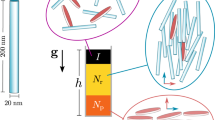Abstract
IN the course of his work on the stability of colloidal solutions, in which the attraction between the particles is ascribed exclusively to London—van der Waals forces, the repulsion being due to the interaction of electric double layers, Overbeek arrived at the conclusion that in order to account for the stability of suspensions of comparatively large particles, it is necessary to assume that for long distances the London—van der Waals energy decreases more rapidly than R-6; and he pointed out that as soon as the distance becomes comparable to the wave-length corresponding to the excitation energies of the interacting atoms, the retardation of the electrostatic interaction between these atoms can no longer be neglected and will presumably lead to a decrease of the attractive force. Following Overbeek's suggestion, we have studied in detail the influence of retardation on the mutual attraction of two neutral atoms. As is well known, the usual expression for the London force is found by calculating the second order perturbation energy due to the interaction:
This is a preview of subscription content, access via your institution
Access options
Subscribe to this journal
Receive 51 print issues and online access
$199.00 per year
only $3.90 per issue
Buy this article
- Purchase on Springer Link
- Instant access to full article PDF
Prices may be subject to local taxes which are calculated during checkout
Similar content being viewed by others
Author information
Authors and Affiliations
Rights and permissions
About this article
Cite this article
CASIMIR, H., POLDER, D. Influence of Retardation on the London–van der Waals Forces. Nature 158, 787–788 (1946). https://doi.org/10.1038/158787a0
Issue Date:
DOI: https://doi.org/10.1038/158787a0
This article is cited by
Comments
By submitting a comment you agree to abide by our Terms and Community Guidelines. If you find something abusive or that does not comply with our terms or guidelines please flag it as inappropriate.



